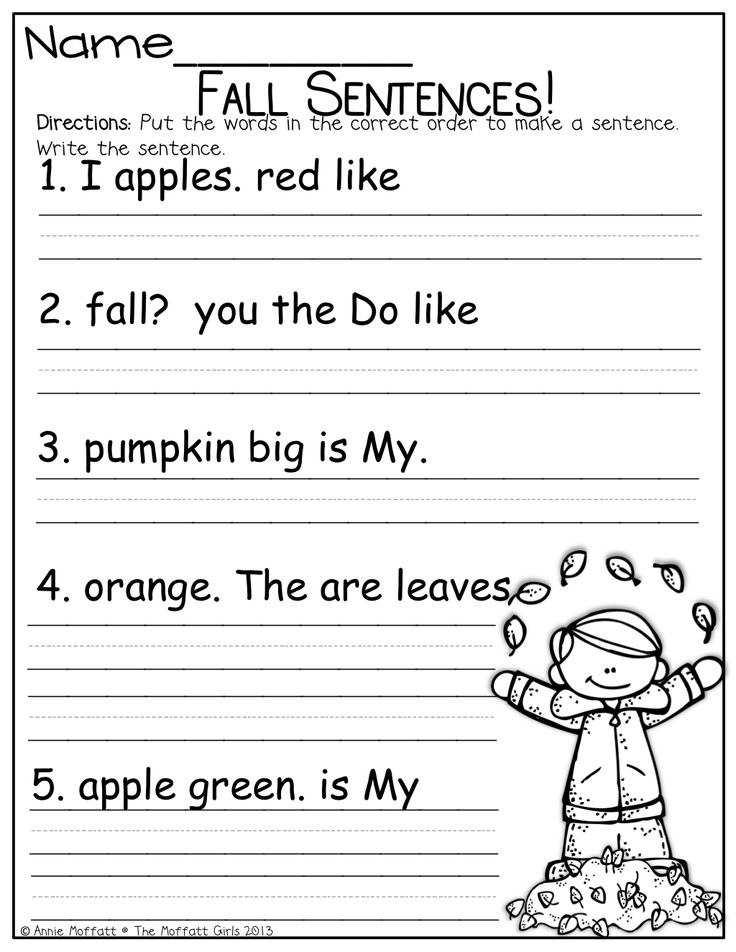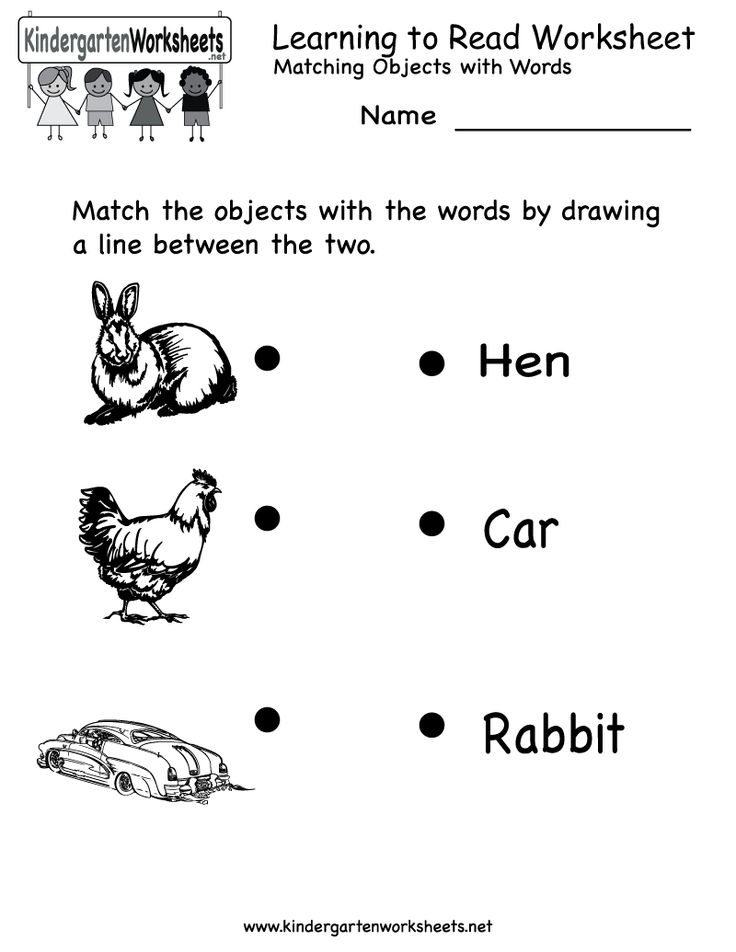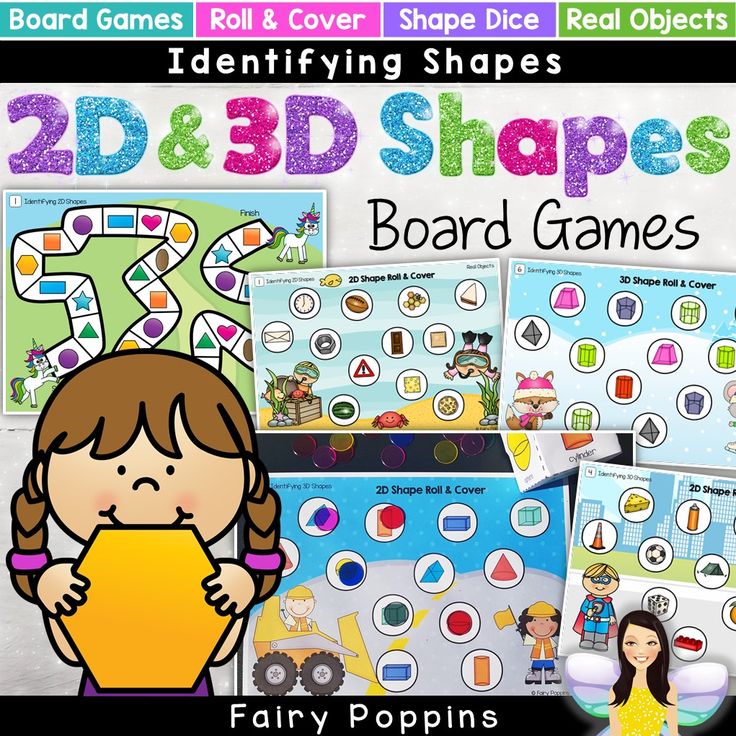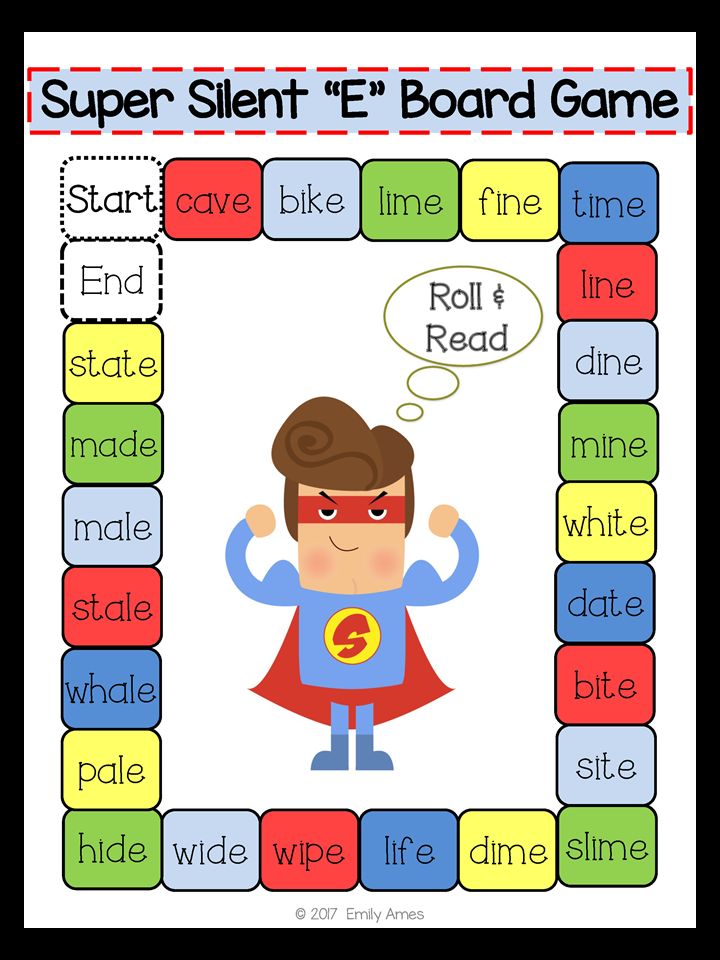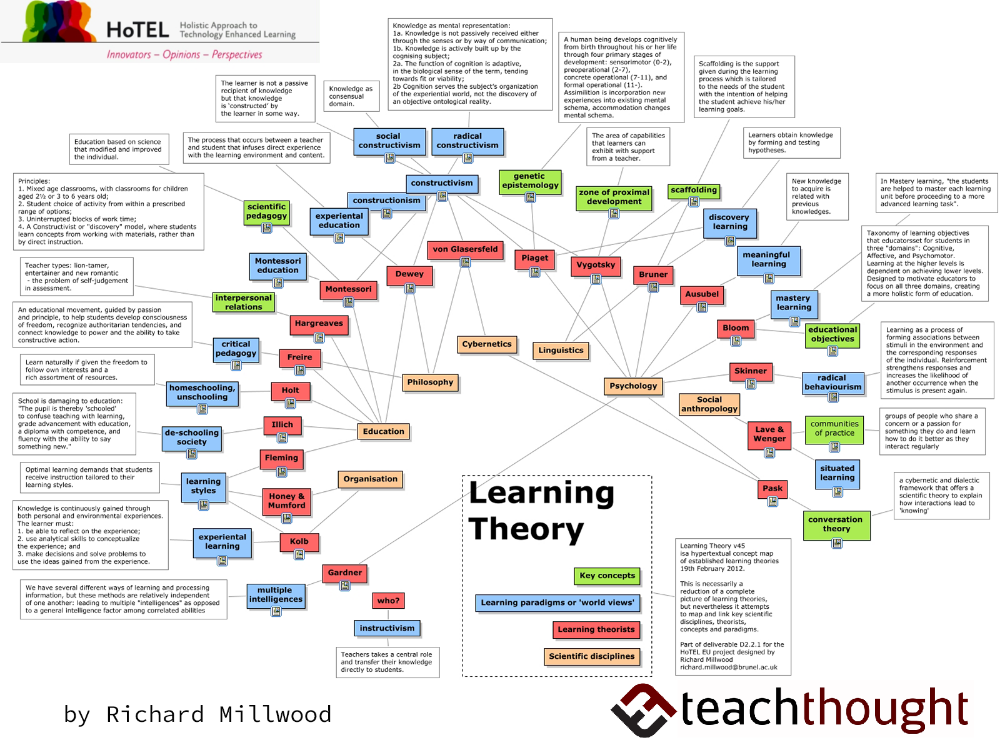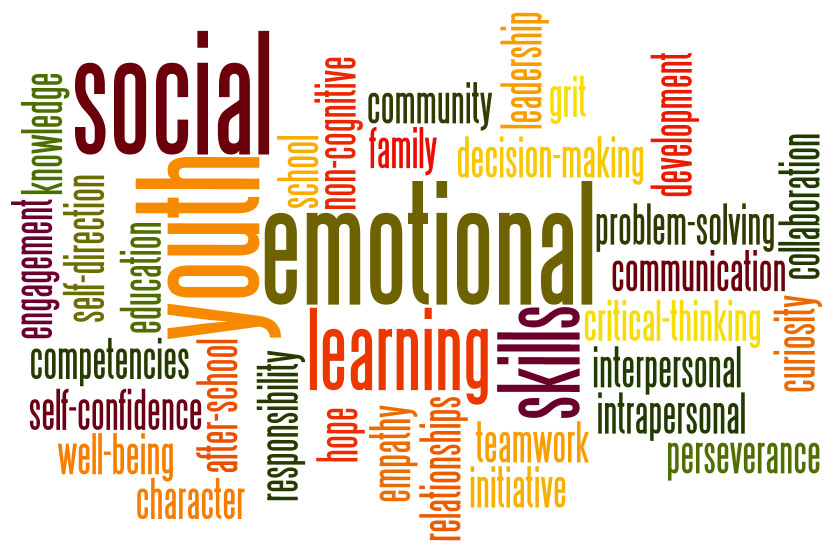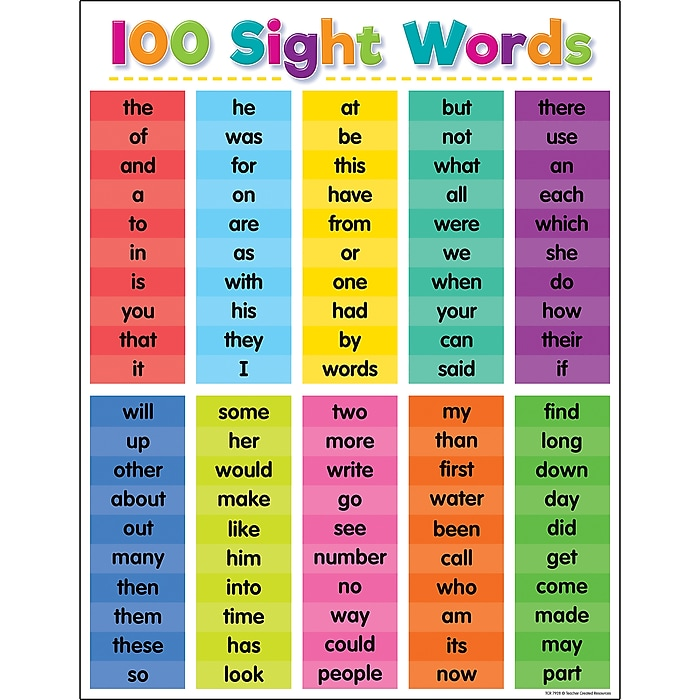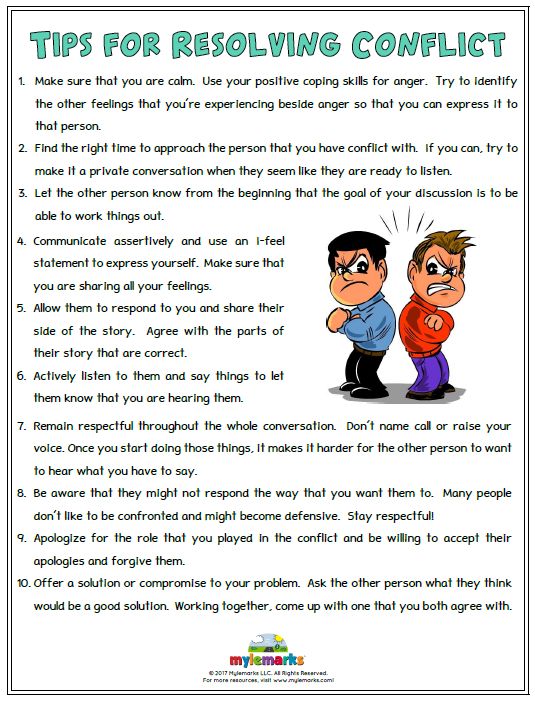Sentences for children
How To Make The Most Of Simple Sentences For Kids
When a child finally learns how to construct their own simple sentences, for kids (and parents!), it’s a really special moment.
Word combinations such as “knee sore” turn into, “Mommy, my knee is sore.” Or “now juice” develops into, “Can I have some juice?”
There’s no denying the importance of sentences — they help us better express our thoughts and feelings. So the only question now is: How can you help your child start constructing their own sentences so that they, too, can communicate better?
Two words: simple sentences.
When Do Kids Start Forming Sentences?
Children start forming sentences once they know a few words. But language development is quite a journey!
Somewhere between 18 and 24 months, a toddler will begin constructing two-word “sentences,” like “want milk” or “no sleep.” At this stage, they are linking two or more words together to express an idea. This is the first step and a big milestone.
By four years old (sometimes earlier), most children are speaking in complete sentences. But that doesn’t mean they’ve reached the end of their sentence journey.
While your child may be speaking in complete sentences, finding playful ways to expose four and five year olds to sophisticated aspects of sentences while being kid appropriate is beneficial. This will help them continue developing their language skills.
One of the best ways to do so is to encourage children to speak in complex sentences to express their ideas. How? This can be achieved by simply resisting the temptation to simplify our own speech.
Remember that children are learning sponges! They will naturally pick up on the language habits you expose them to. So, continue speaking in complex sentences while in their presence. It’s not a bad thing if your child asks, “What does that mean?”
Of course, simple sentences come first.
What Makes A Simple Sentence?
A simple sentence is the most basic form of a sentence.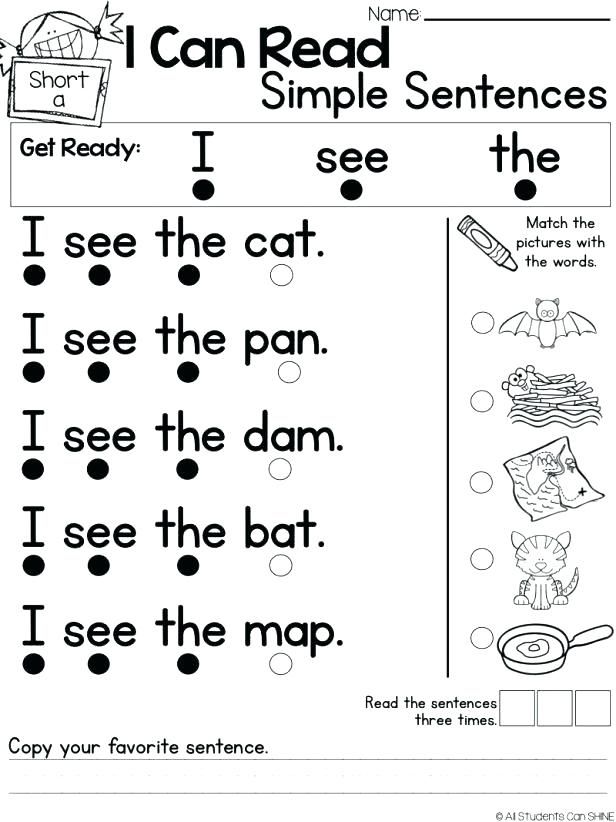 It contains only one independent clause — a group of words that forms a complete thought and is made up of a subject and predicate (which includes a verb and expresses what is said about the subject).
It contains only one independent clause — a group of words that forms a complete thought and is made up of a subject and predicate (which includes a verb and expresses what is said about the subject).
For example, in the simple sentence, Thomas kicks the ball, “Thomas” is the simple subject and “kicks the ball” is the predicate, with “kicks” being the verb, or simple predicate.
Simple sentences for kids are mostly short, but they can also be long. The length of the sentence isn’t the focus. What’s important is that the basic elements (subject and predicate) are always present.
When we communicate in our everyday lives, there’s usually a good mixture of both simple and more complex sentences without us even thinking about it. In order to help our kids reach this effortless communication stage, we need to help them understand the basics.
The good thing about the English language (and every other language, actually!) is that once you understand the basics, moving on to complicated structures is easier.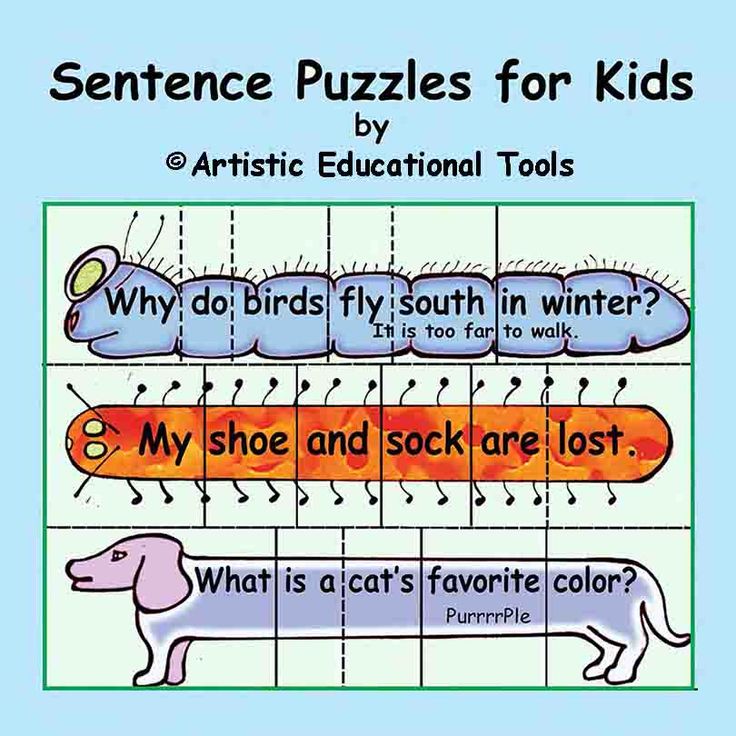
Simple Sentences For Kids To Act Out
One of the best ways for children to learn is through acting things out. If you have an active young child who enjoys moving around, why not use their energy to encourage some learning?
Here are some simple sentences for kids they will have fun acting out.
- He reads a book.
- The dog barks.
- The cat sits on the mat.
- I hop on one foot.
- The pig gobbles his food.
- The rooster crows.
With these sentences for kids, your child will have a blast while naturally learning what makes up a sentence!
Other Ways To Practice Sentences For Kids
1) Use Pictures
We recommend having your child use pictures to make up stories. You can even record the stories and listen to them for a little added fun!
If your child wants to write their ideas, too, that’s great! But don’t worry about standard spelling; much more important is the creative effort involved in thinking of a great story composed of interesting sentences of their own creation.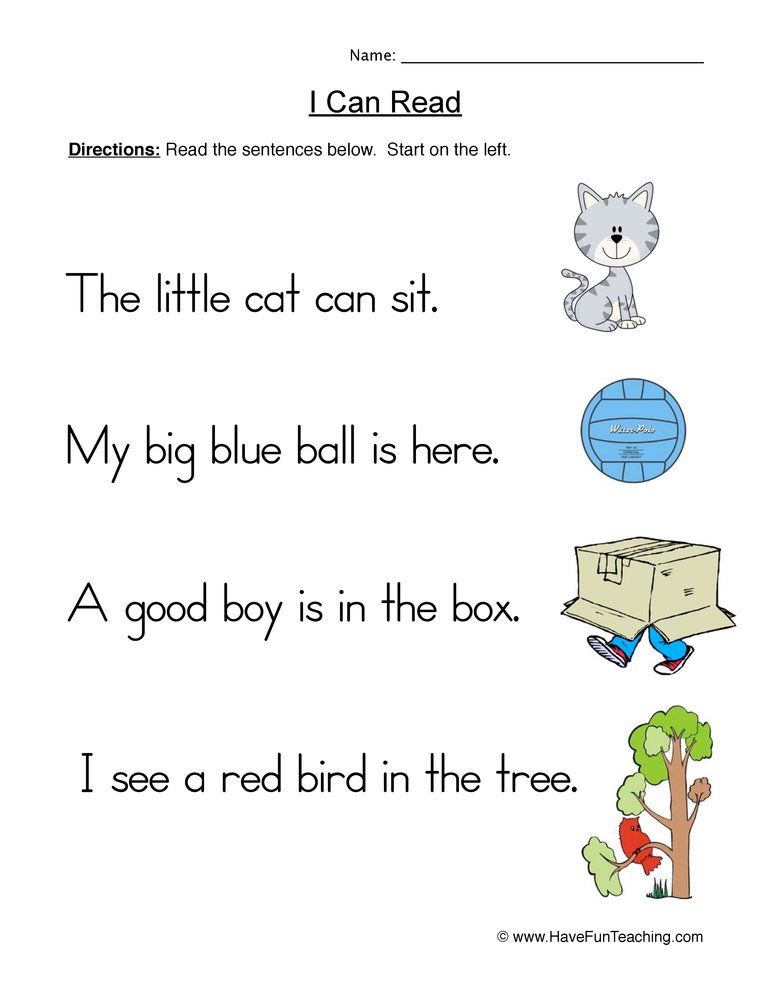
You can use pictures of animals, nature, sports, or even family photos. Then encourage your child to share whatever comes to their mind after having a look at these images.
During the first session, your child may need a few verbal prompts to help them get started. Simple questions like, “What’s happening in the picture?” or “What does this image remind you of?” can help to get their creativity flowing.
If you have multiple children, you can allow them to share what they came up with about the same image. As individuals, they will most likely think of different sentences, so this is a great opportunity to emphasize how everyone has unique ideas.
We encourage you to allow your children creative freedom here. The idea is to place an image in front of them and let them create anything they feel like creating.
2) Play Sentence Games
If you’ve been following our blog for a while, you’ll know one thing for sure — the HOMER team loves a good game! Games are not only fun, but they’re also great ways to help children remember fundamental learning concepts.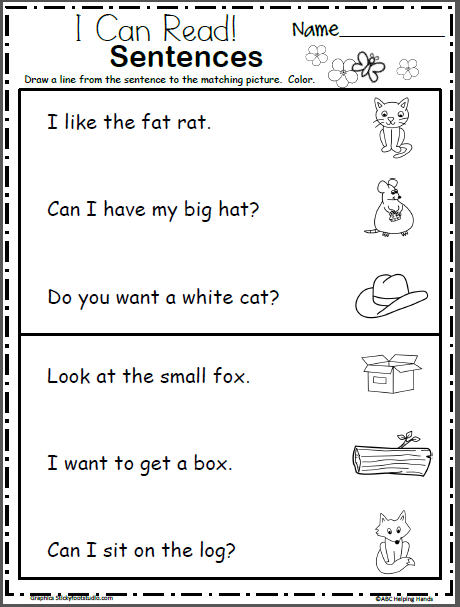
One of our favorite sentence games is Sentence Mix & Match.
What You’ll Need:
- Several index cards
- Markers to write with
What To Do:
- Write interesting subjects on half of the index cards (Ideally, these are things that your child likes. For example: dinosaurs, ice cream, different shapes, colors, etc.).
- On the other half, write predicates or sentence endings that make sense with your individual subjects.
- After writing, place the cards so that they make realistic sentences.
- Then, turn all the cards over and shuffle them. At this point, you want to ensure that you separate sentence beginnings and endings.
- After the shuffle, turn your cards over and discover what silly sentences you get.
- Remember to begin the subject cards with capital letters and sentence-endings cards with a period.
This is a fun activity to help children see that sentences are not always set in stone. They will also quickly learn that the meaning of a sentence can change when words get moved around.
3) Play With Types Of Sentences
Sentence Mix & Match is not the only way to help children learn sentences for kids while also having fun. Another activity we’re huge fans of is playing with types of sentences. Specifically — statements, questions, and exclamations.
To get started, pick any simple sentence that your child will already be familiar with (e.g., “I like playing outside.”).
Next, encourage your child to say this same sentence as a statement, a question, and then an exclamation.
Similar to Sentence Mix & Match, this game helps children understand that minor tweaks can change the meaning of a sentence.
Children will come across punctuation marks during reading time, but they may not always understand the significance of each. This game will help your child learn how periods, question marks, and exclamation points affect a sentence.
5) Make A Switch
The subject and predicate for each simple sentence have a specific function.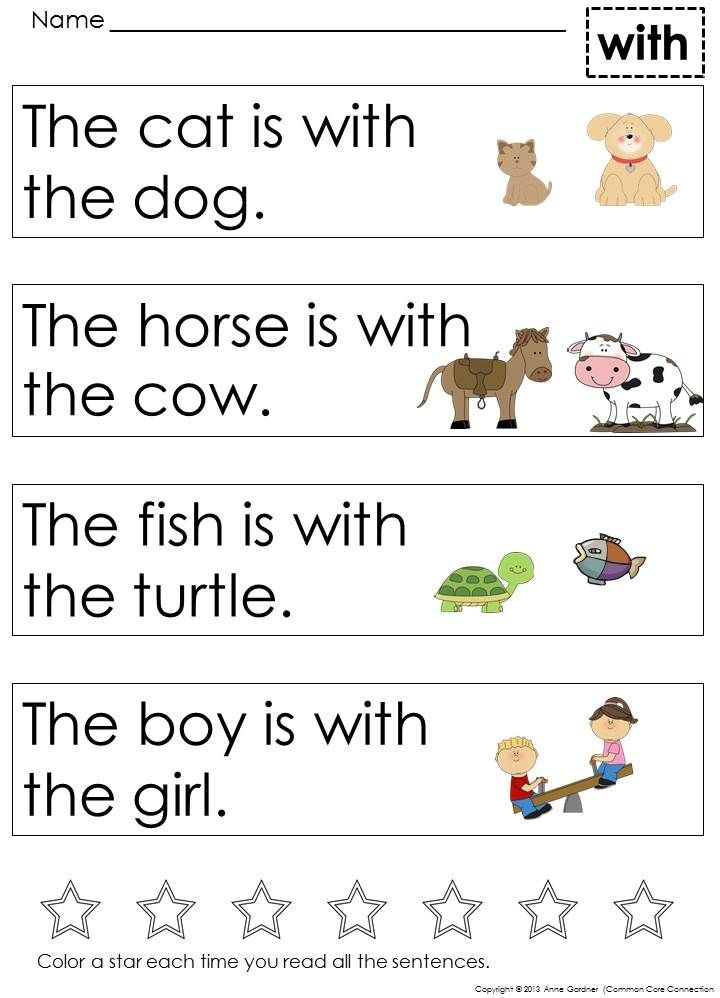 For children to use these correctly, they will need to understand what their roles are.
For children to use these correctly, they will need to understand what their roles are.
When kids start speaking as babies and then toddlers, they often repeat words, phrases, or the simple sentences they’ve heard from you, your partner, siblings, or other people around them.
At this stage, they haven’t fully grasped the functions of subjects and predicates. If we want to help our children develop their own sentences, we will need to help them understand the roles of these sentence parts.
A creative game they (and you!) will enjoy involves switching the subjects and predicates of a sentence.
Start with a simple three-word sentence, like, “A cat played.” Then take turns changing either the subject or the predicate of the sentence.
This may look something like this:
- A cat jumped
- A dog jumped
- A dog growled
- A gerbil growled
- A gerbil scampered
Once your young learner is confident switching three-word sentences, move on to four words, five words, and so forth.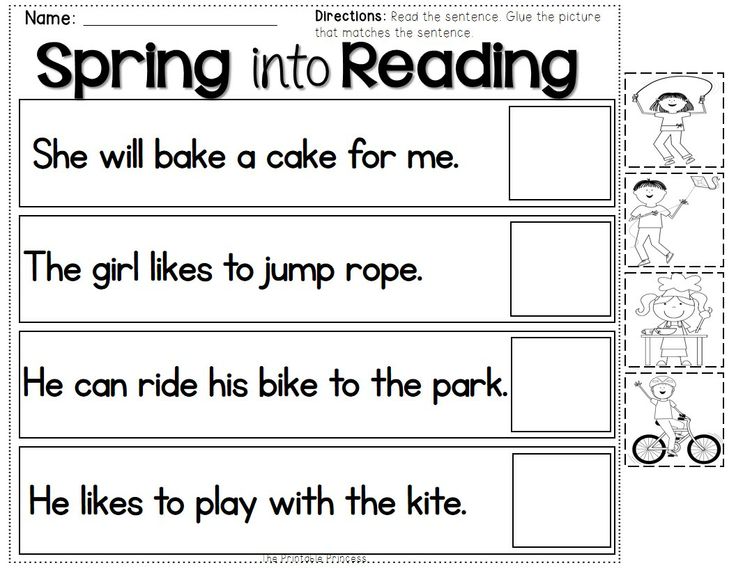
Through this fun activity, your child will start understanding the roles of predicates and subjects in sentences.
Simple Sentences For The Win!
A child’s language journey is pretty incredible. It often starts with lots of babbling and moves to single words. Soon, you get two-word combinations, and before you know it, you’re given a detailed account of what happened in class today.
As you’re doing the activities we’ve mentioned, remember to allow your child creative freedom. We know that language has a lot of rules, but that doesn’t mean it can’t be fun! Encourage your young learner to be as imaginative as they want to be.
For instance, if they write or say, “The lion growls at the dinosaur,” let’s celebrate the correct sentence construction and, for a moment, imagine a world where lions and dinosaurs exist in the same age!
For more fun and effective learning activities, check out the HOMER Learn & Grow app.
Author
English Sentences with Audio Using the Word "Children"
English Sentences with Audio Using the Word "Children"- She has ten children.
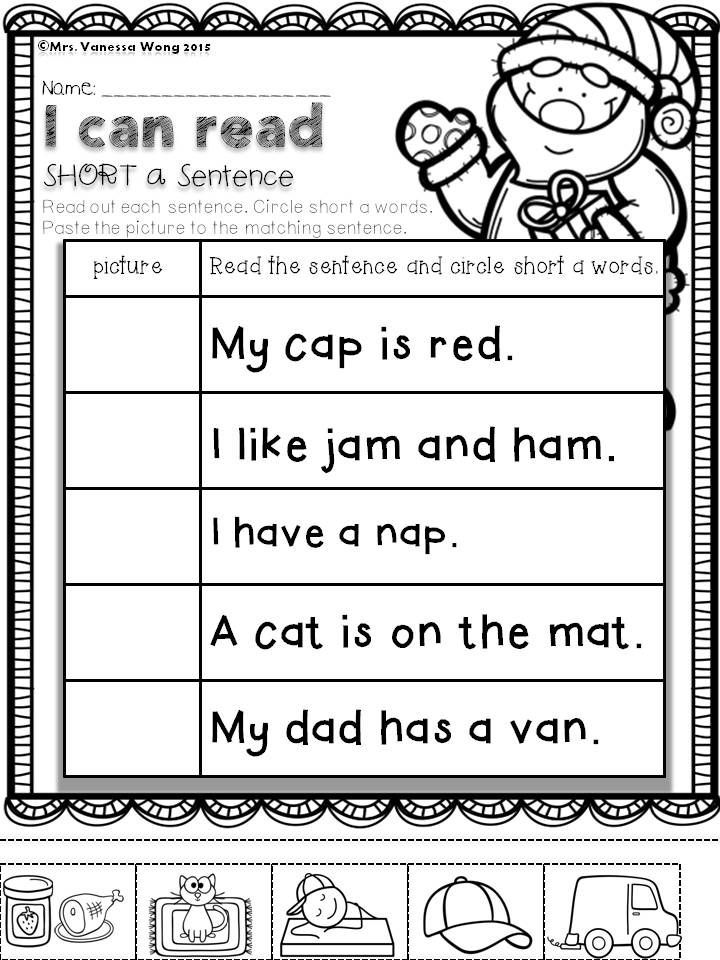
- He has three children.
- She loves her children.
- I don't have any children.
- She abandoned her children.
- She left her children behind.
- How many children do you have?
- I took the children to school.
- She took care of the children.
- The children went out to play.
- Tom got angry at the children.
- They were school children then.
- Children often ask me for money.
- He is married with two children.
- I am thinking about my children.
- He adapted the story for children.
- Children should obey their parents.
- Two children are sitting on the fence.
- I'll take care of your children tonight.
- I don't think children should drink beer.
- My children wear out their shoes quickly.
- It's easier to teach children than adults.
- She didn't want him to pamper the children.
- It's about time you sent the children to bed.

- We must look after her children this evening.
- She watched the children swimming in the pool.
- Please don't let the children play with knives.
- Everywhere you look you can see children playing.
- Will you take care of the children while I'm out?
- She always lets her children do what they want to.
- It's easier to teach children than to teach adults.
- She always fed her children before she fed her dog.
- Please don't allow the children to play with knives.
- The children are sleeping. Please don't be so noisy.
- She argued with him about their children's education.
- Parents should spend quality time with their children.
- Parents are responsible for their children's education.
- He walked slowly so the children would be able to follow.
- We should start getting Christmas gifts for the children.
- With your children away, you must have a lot of free time.
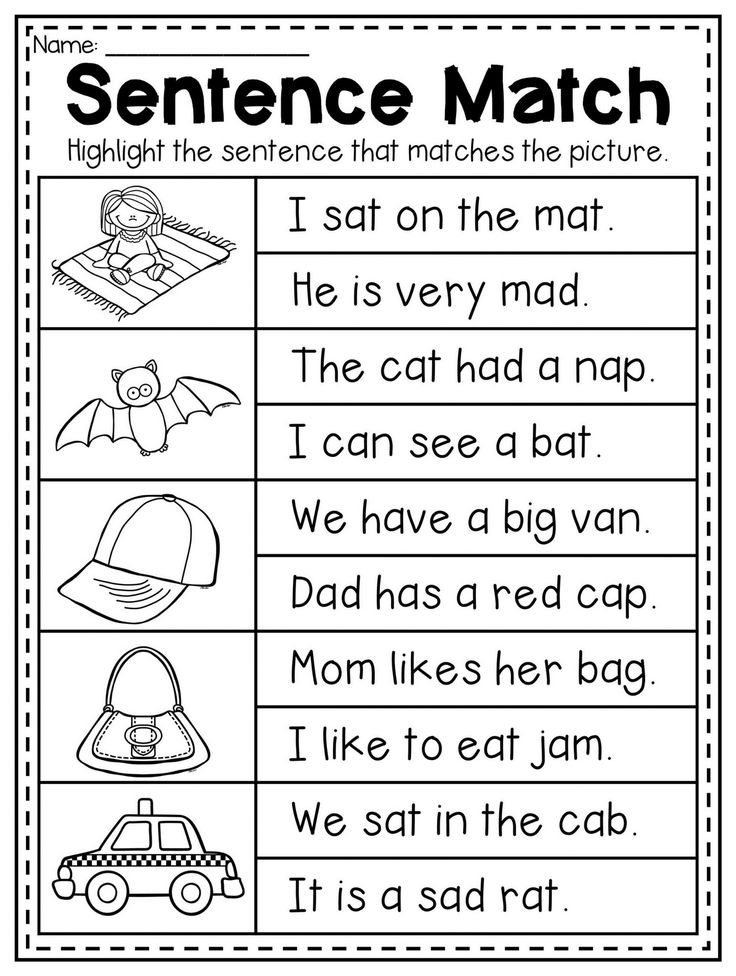
- Parents are usually concerned about their children's future.
- I'm willing to take care of your children, if you want me to.
- He stopped smoking because his wife and children asked him to.
- She spends a majority of her time taking care of her children.
- Many people think that children spend too much time watching TV.
- I think it's time for me to spend a little time with my children.
- I told the children to be quiet, but they just kept on being noisy.
- How many times a week do you spend doing fun stuff with your children?
- The children were so excited after the party that they couldn't sleep.
- She spends a lot of time helping her children learn to deal with money.
- Many people think that children don't spend enough time playing outside.
- Last year, I couldn't spend as much time with my children as I wanted to.
- Years ago, when Tom's children were young, he used to take a lot of pictures.
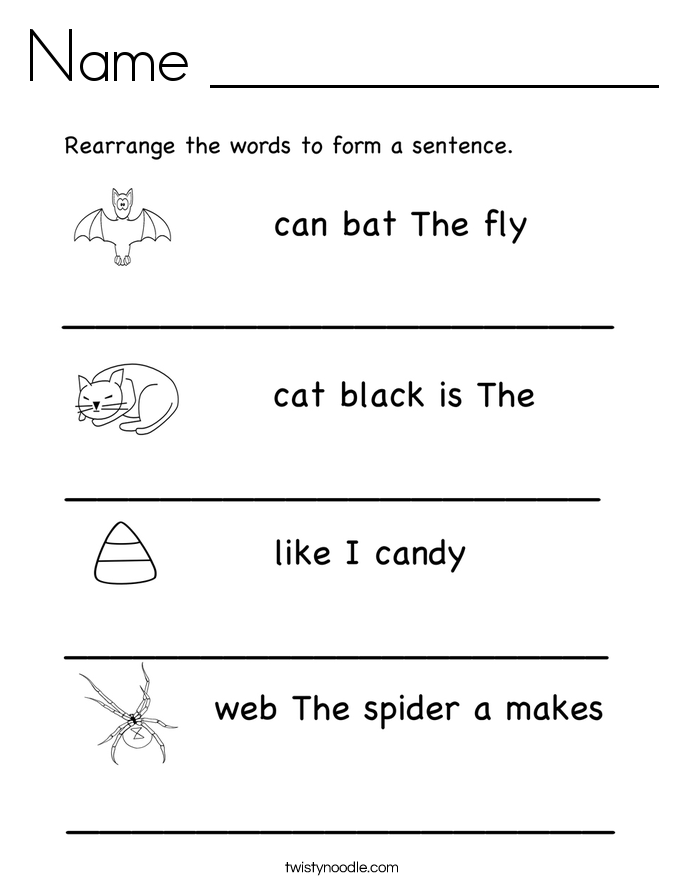
- You should always spend time doing things that help your children get ahead in life.
- Since I have no children, I have more time to spend doing volunteer work than parents do.
- He has three children.
20 reading texts for children aged 5-6-7-8
A child who has learned to put sounds into syllables, syllables into words, and words into sentences needs to improve his reading skills through systematic training. But reading is a rather laborious and monotonous activity, and many children lose interest in it. Therefore, we offer texts of small size , the words in them are divided into syllables.
First read the work to the child yourself, and if it is long, you can read its beginning.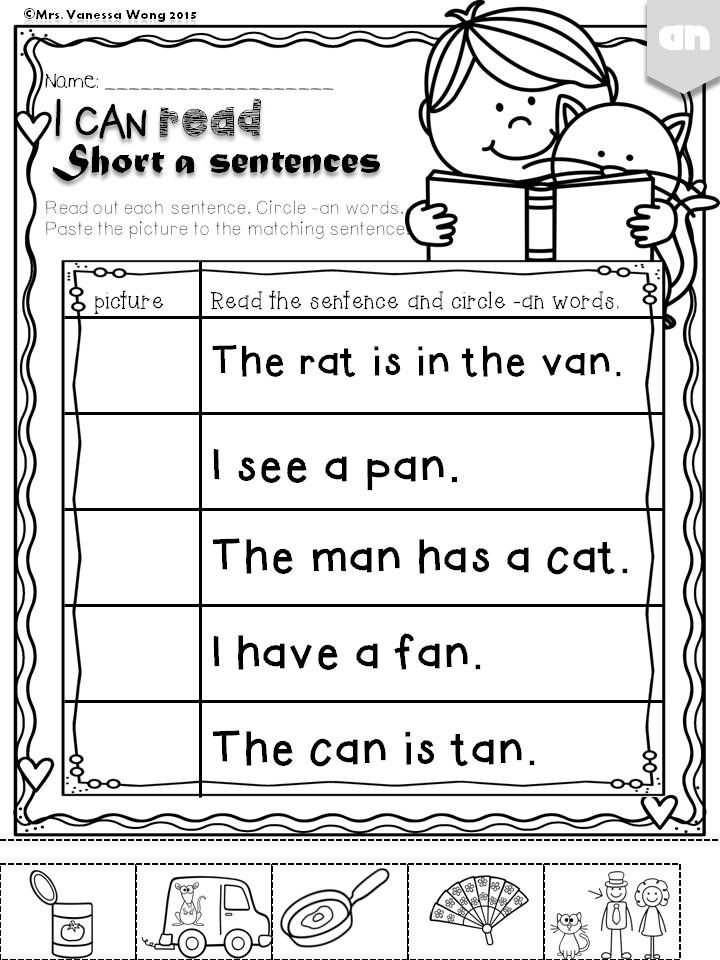 This will interest the child. Then invite him to read the text. After each work, questions are given that help the child to understand what they have read and comprehend the basic information that they have learned from the text. After discussing the text, suggest reading it again.
This will interest the child. Then invite him to read the text. After each work, questions are given that help the child to understand what they have read and comprehend the basic information that they have learned from the text. After discussing the text, suggest reading it again.
Mo-lo-dets Vo-va
Ma-ma and Vo-va gu-la-li.
In-va ran-sting and fell.
It hurts no-ha, but Vo-va does not cry.
Wow!
B. Korsunskaya
Answer questions .
1. What happened to Vova?
2. What made him sick?
3. Why is Vova doing well?
Clever Bo-beak
Co-nya and co-ba-ka Bo-beak gu-la-li.
So-nya played-ra-la with a doll.
That's why So-nya in-be-zha-la to-my, and the doll for-would-la.
Bo-beek found a doll-lu and brought it to So-ne.
B. Korsunskaya
Answer the questions.
1.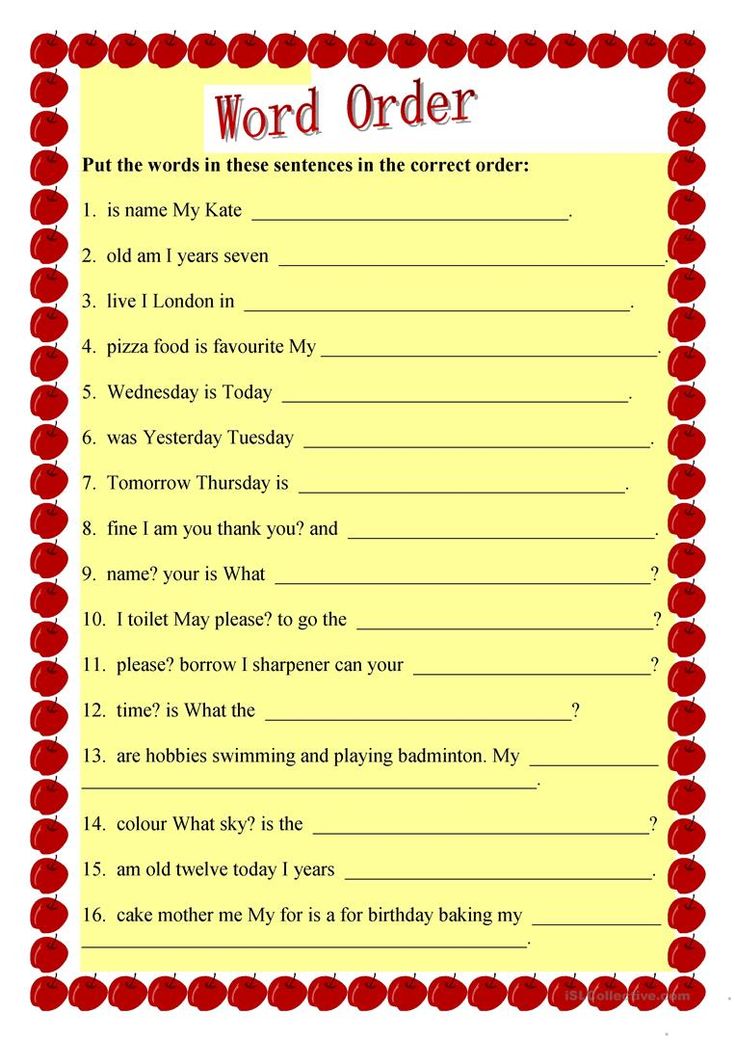 Who did Sonya walk with?
Who did Sonya walk with?
2. Where did Sonya leave the doll?
3. Who brought the doll home?
The bird made a nest on a bush. De-ti our nest-up and took off on the ground.
- Look, Vasya, three birds!
In the morning, deti came, and the nest was empty. It would be a pity.
L. Tolstoy
Answer questions.
1. What did the children do with the nest?
2. Why was the nest empty in the morning?
3. Did the children do well? How would you do?
4. Do you think this work is a fairy tale, a story or a poem?
Pete and Mi-sha had a horse. They began to argue: whose horse. Did they tear each other apart.
- Give me - my horse.
- No, you give me - the horse is not yours, but mine.
Mother came, took a horse, and became nobody's horse.
L. Tolstoy
Answer the questions.
1. Why did Petya and Misha quarrel?
2.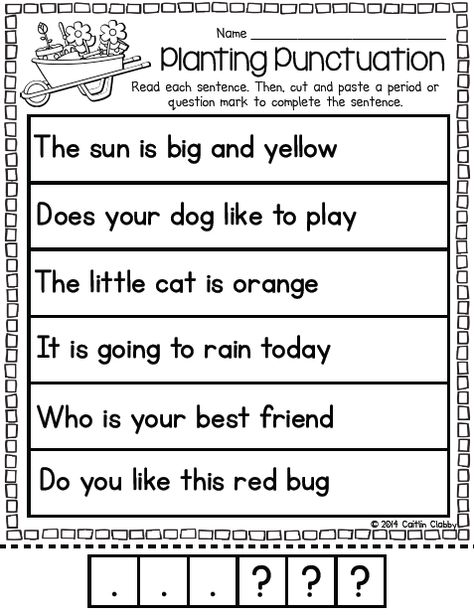 What did mother do?
What did mother do?
3. Did the children play horse well? Why do you think so
?
9000 9000 9000 9000 9000 9000 9000 9000 9000 9000 9000 9000 9000 9000 9000 9000 9000 9000 9000 9000 9000 9000 9000 9000
015
9 9000 9000
FILVORDA for the development of reading, View here.
It will be interesting for children to read selected texts, they affect the emotional world of the child, develop his moral feelings and imagination . Children will get acquainted with the works of L. Tolstoy, K. Ushinsky, A. Barto, S. Mikhalkov, E. Blaginina, V. Bianchi, E. Charushin, A. Usachyov, E. Uspensky, G. Snegiryov, G. Oster, R. Rozhdestvensky, as well as fairy tales of different nations.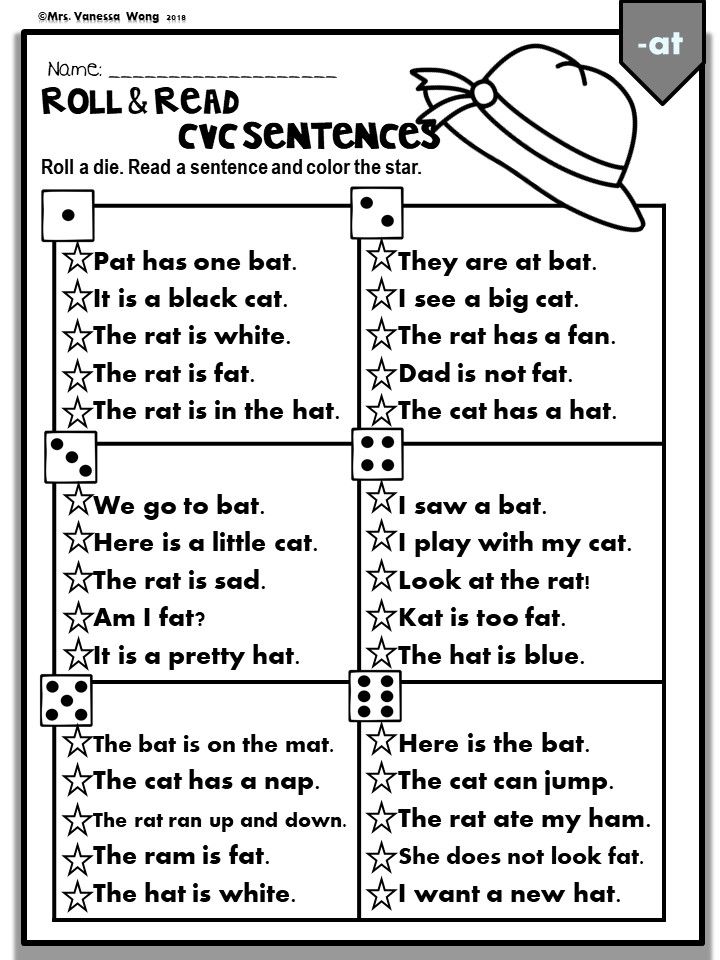
It is advisable to show children the genre features of poems, stories and fairy tales using the example of these works.
Fairy tale is a genre of oral fiction containing events unusual in the everyday sense (fantastic, wonderful or worldly) and distinguished by a special compositional and stylistic construction. In fairy tales there are fairy-tale characters, talking animals, unprecedented miracles happen.
Poem is a short poetic work in verse. The verses are read smoothly and musically, they have rhythm, meter and rhyme.
Story — small literary form; a narrative work of small volume with a small number of characters and the short duration of the events depicted. The story describes a case from life, some bright event that really happened or could happen.
In order not to discourage reading, do not force him to read texts that are uninteresting and inaccessible to his understanding. It happens that a child takes a book he knows and reads it “by heart”.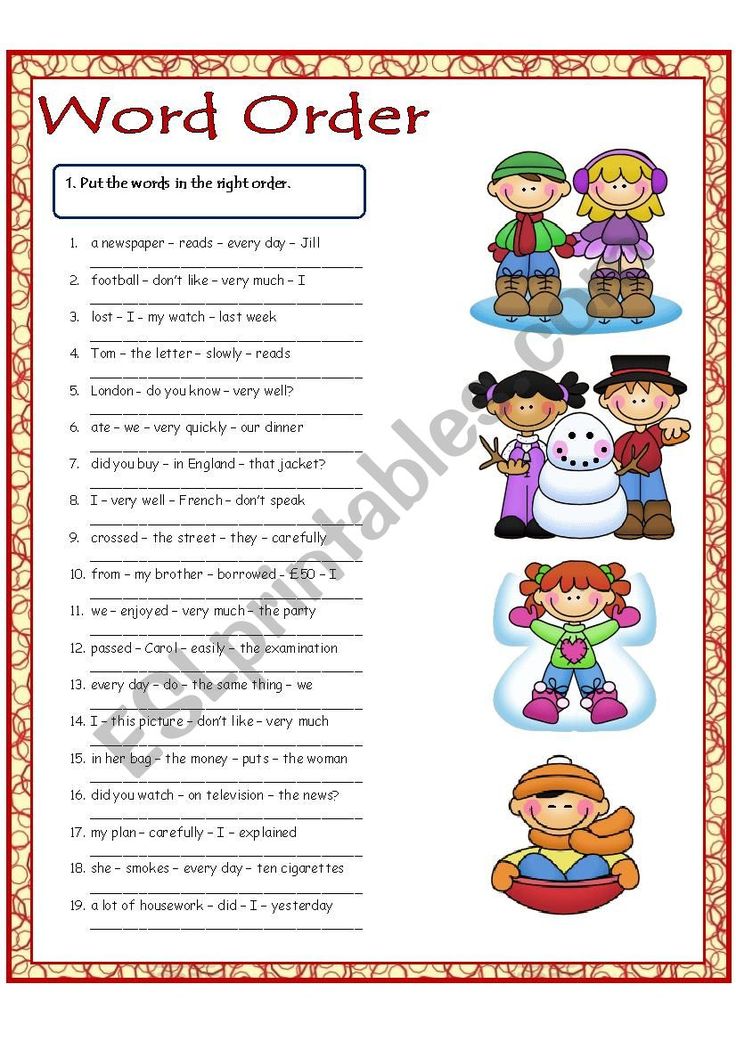 Mandatory every day read to your child poems, fairy tales, stories.
Mandatory every day read to your child poems, fairy tales, stories.
Daily reading enhances emotionality, develops culture, horizons and intellect, helps to cognize human experience.
Literature:
Koldina D.N. I read on my own. - M .: TC Sphere, 2011. - 32 p. (Candy).
read the offer. Ekaterina Buneeva's home online literacy school
In order for a child to learn to understand a text, you must first work with a separate sentence. What does it mean? This means showing the child how to read all the factual information from the sentence, that is, teaching him to understand what the sentence says directly, explicitly. And then show that a separate sentence can also contain subtextual information (something that is not directly mentioned, but the reader guesses).
The tasks below are suitable for children who can already read. It can be older preschoolers, and first graders, and older children.
1.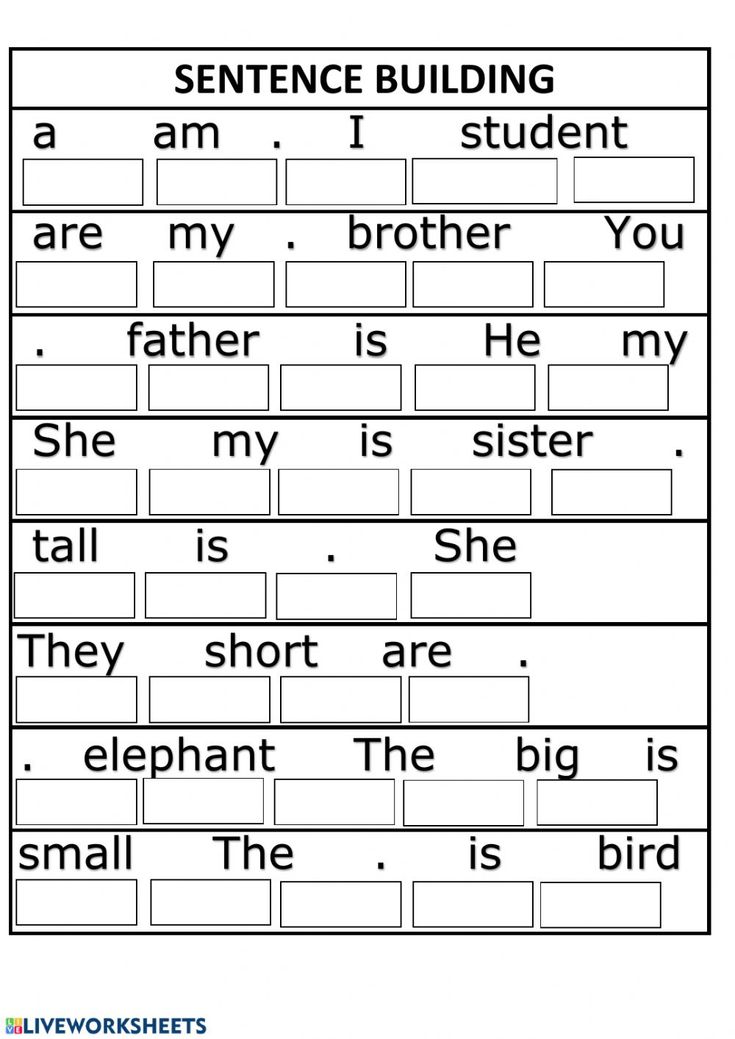 We teach the child to determine how many words are in a sentence and ask questions to these words. At the same time, we draw attention to the fact that the question can not be asked for every word. For example, in the sentence “Nikita has a machine with control” there are 5 words, and there will be 3 questions, because you cannot ask a question to the prepositions U and C: these words do not mean anything, they help to connect the words in the sentence. What are these questions? 1) Who has a machine with control? 2) What does Nikita have? 3) What kind of car does Nikita have?
We teach the child to determine how many words are in a sentence and ask questions to these words. At the same time, we draw attention to the fact that the question can not be asked for every word. For example, in the sentence “Nikita has a machine with control” there are 5 words, and there will be 3 questions, because you cannot ask a question to the prepositions U and C: these words do not mean anything, they help to connect the words in the sentence. What are these questions? 1) Who has a machine with control? 2) What does Nikita have? 3) What kind of car does Nikita have?
But in the sentence “Peter stopped at the crossing”, questions can be asked to all words, except for the preposition U (Who stopped at the crossing? What did Petya do? Where did Petya stop?), and these will be questions for factual information. And you can also ask this: Why did Petya stop at the crossing? This is a question for subtext information. There is no answer to this question in the sentence, but we can guess and assume: either the red traffic light was on, or, if there was no traffic light, Petya stopped because cars were driving along the road.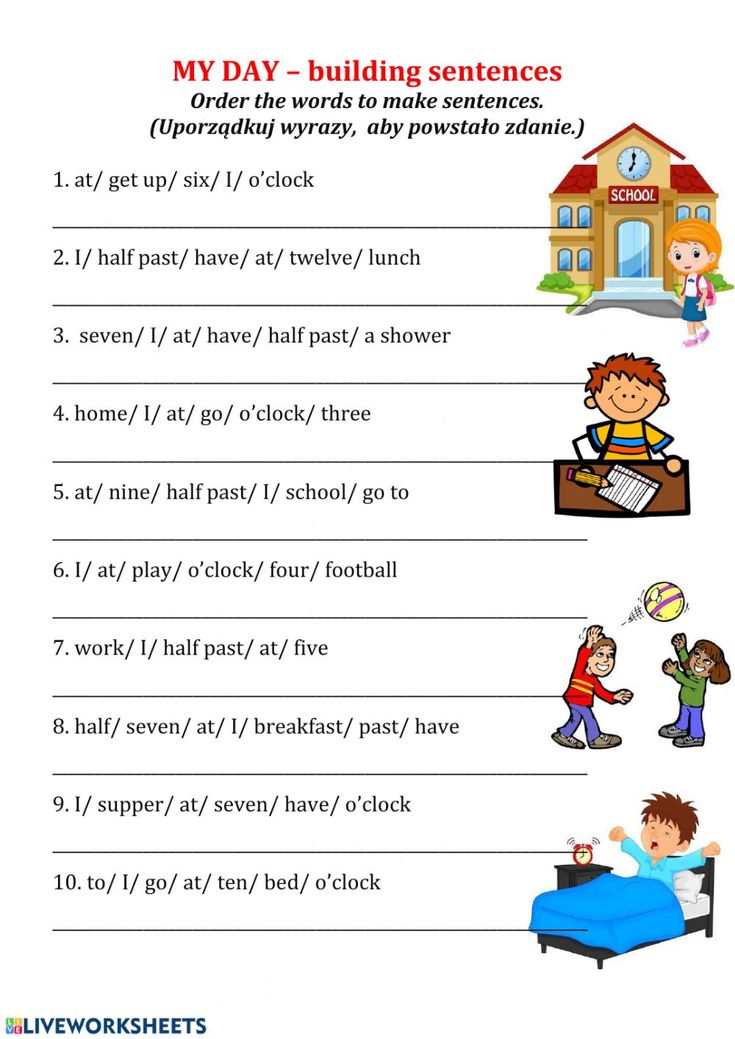 With the help of this exercise, we gradually teach the child to understand that the sentence contains not only information that is reported in finished form, but also that which is hidden “between the lines”, and you also need to be able to read it.
With the help of this exercise, we gradually teach the child to understand that the sentence contains not only information that is reported in finished form, but also that which is hidden “between the lines”, and you also need to be able to read it.
2. We learn to pay attention to word order and put logical stress. For example, we give a sentence where the word order is clearly violated (Children and pencils got the albums.) And we suggest correcting it - swapping words so that the meaning of the sentence becomes clear. And then we ask the child to read the sentence several times, highlighting a different word each time (we learn to put logical stress). For example: CHILDREN took out albums and pencils. If we highlight the word CHILDREN with our voice, this will be the answer to what question? (WHO got the albums and pencils?). Children GET out albums and pencils. And this is the answer to what question? (WHAT DID THE CHILDREN DO?), etc. You noticed that, while dealing with word order and logical stress, we essentially continue to teach how to ask questions to a sentence, but not directly, but through answers.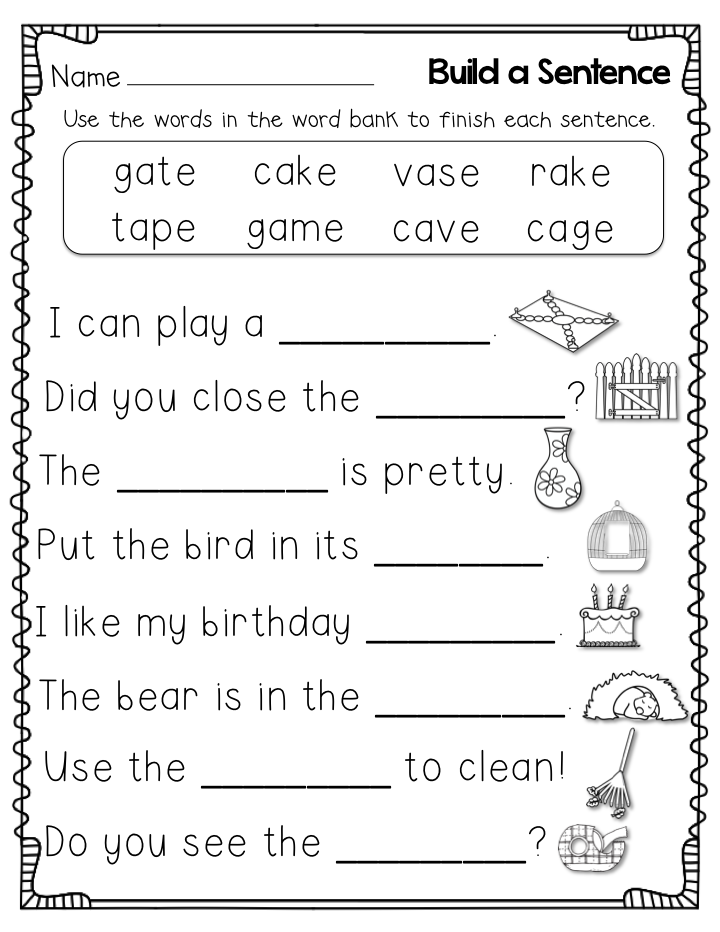
3. We learn to see words in a sentence that are superfluous in meaning. In order for a child to find an extra word in a sentence, he must think about the meaning of the sentence and understand it. For example, in the sentence “Birds flew in and started nesting very much,” the extra word is very. Why? Here we will be helped by the ability to ask questions to words. The question started (how?) does not make much sense: another word is clearly needed here (immediately, soon ...), but it is not there, which means that the word is VERY superfluous, it needs to be removed.
4. We check how we learned to read sentences: we perform complex tasks. Such tasks suggest that the child first composes a “scattered” sentence, excluding an extra word, and then asks questions to all independent words. For example, given the words: on, strong, was, sea, storm, ship. It is necessary to make a sentence, eliminating the extra word: There was a strong storm at sea. Then determine which words you can ask a question.